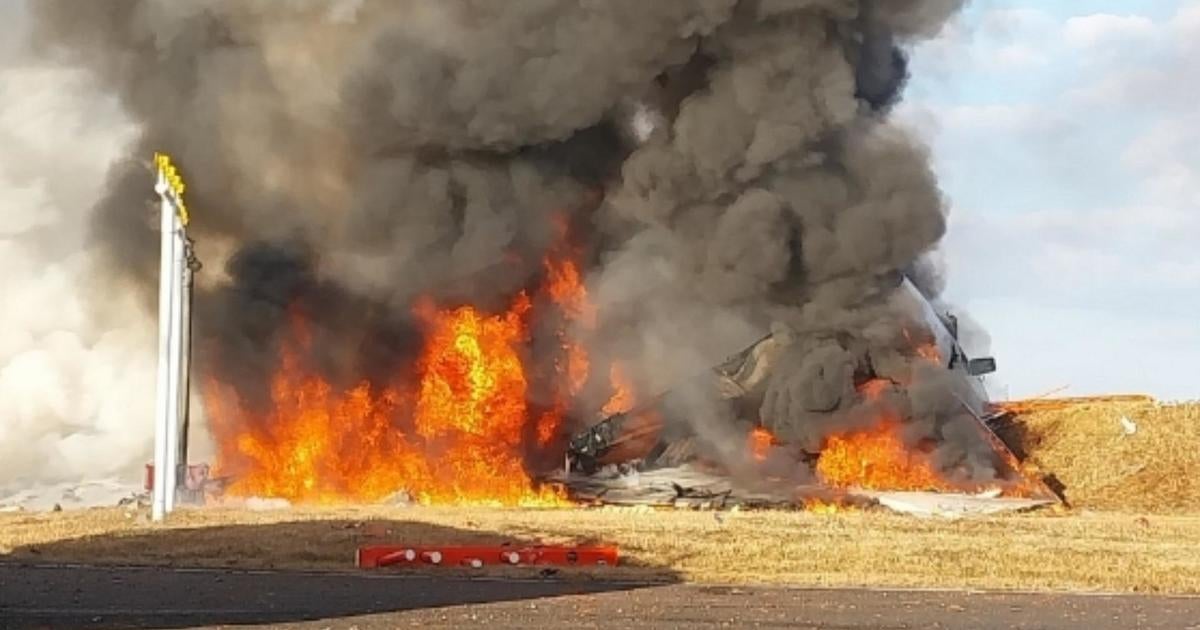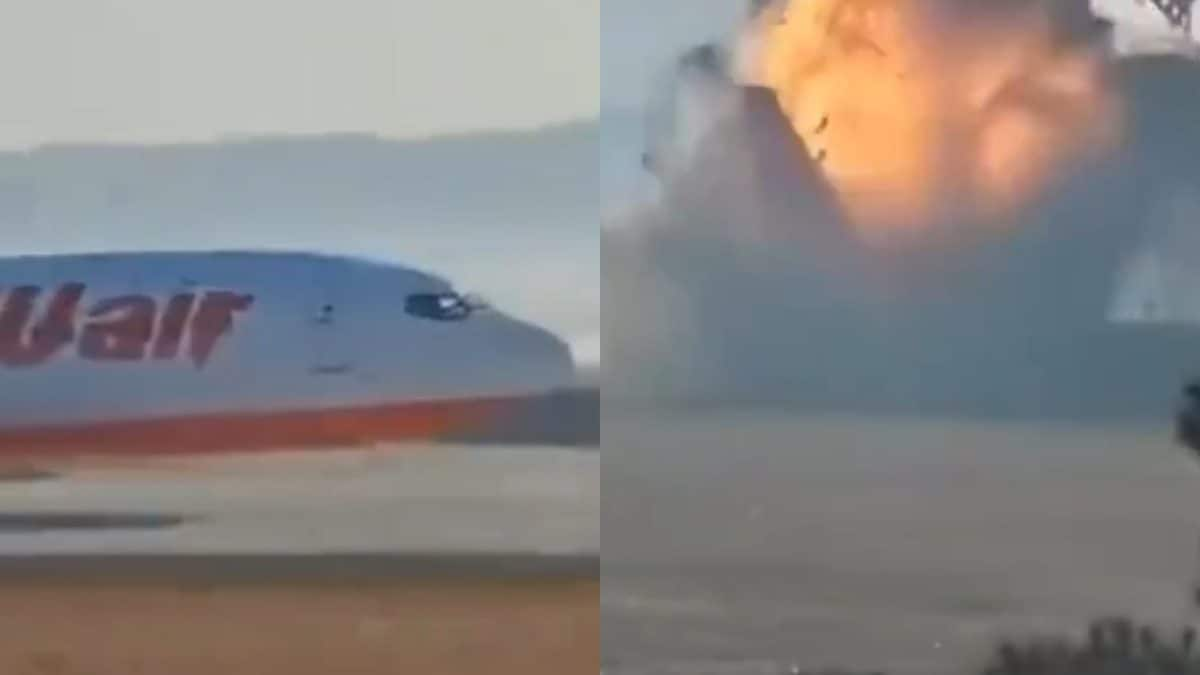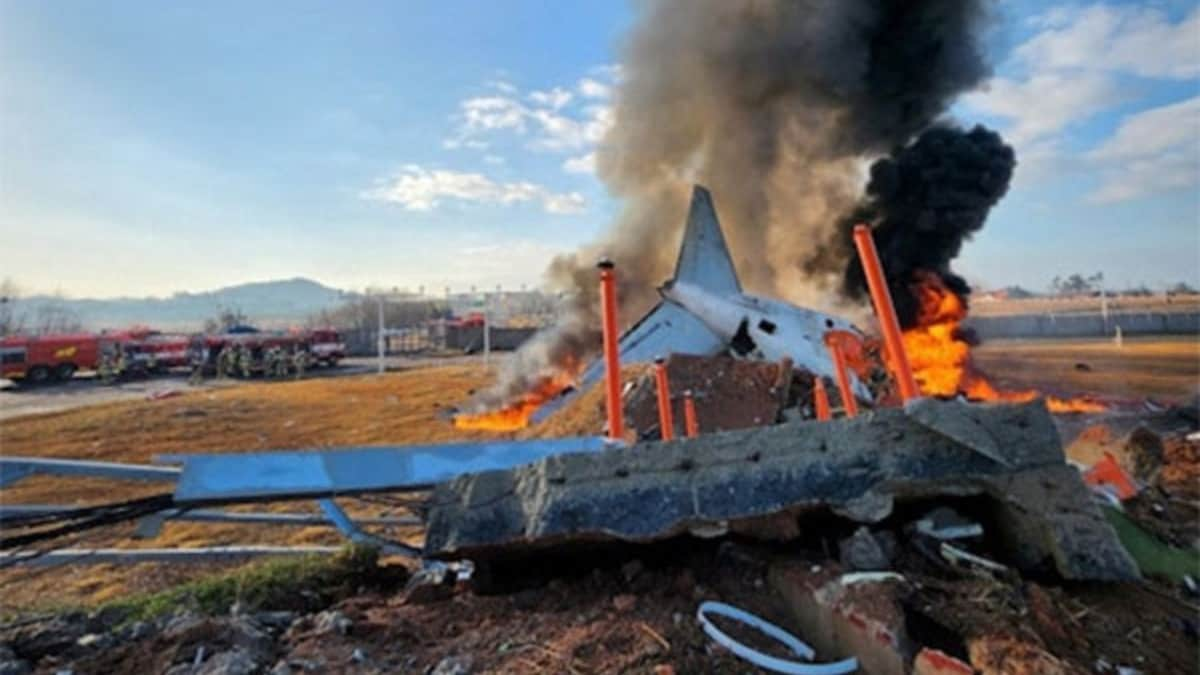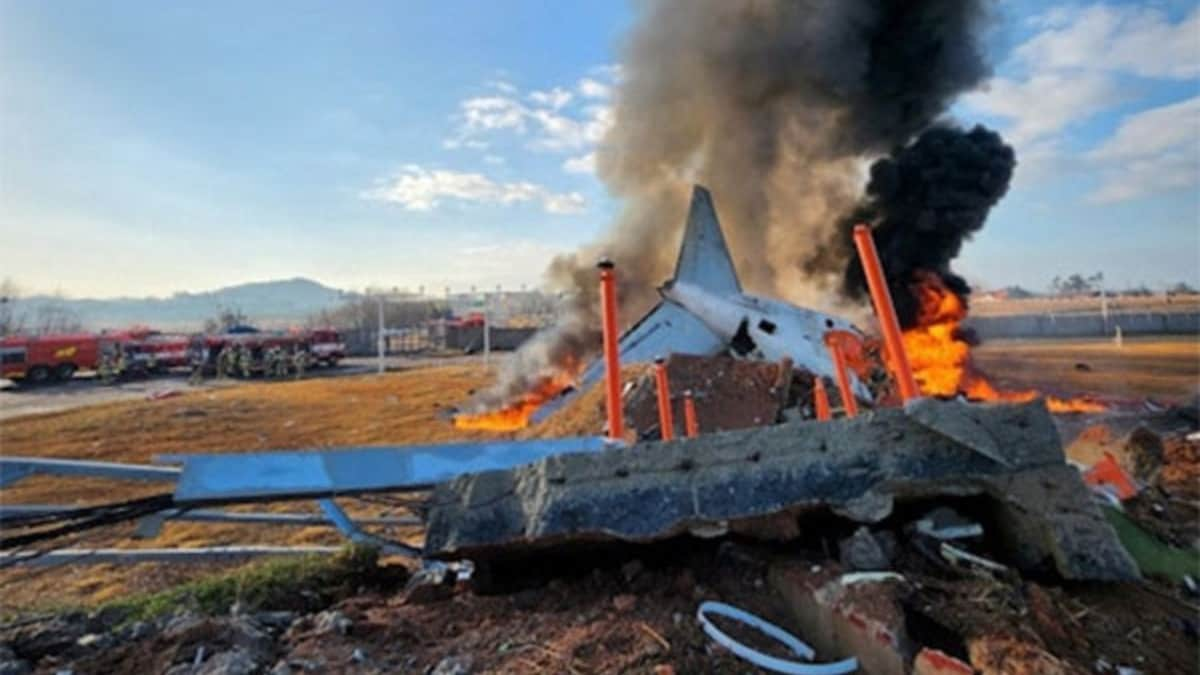Plane crashes south korea are a sadly recurring event, impacting not only the lives lost but also the nation’s aviation safety record and public confidence. This exploration delves into the historical context, geographic influences, regulatory frameworks, technological advancements, human factors, and emergency response procedures surrounding these tragic incidents. We’ll examine contributing factors, preventative measures, and the ongoing efforts to improve air travel safety in South Korea.
Plane crashes in South Korea, sadly, are a serious issue demanding thorough investigation and safety improvements. It’s a stark contrast to the dazzling spectacle of light and technology, like the amazing shanghai new year drone show , which highlights human ingenuity. Thinking about those plane crashes, though, reminds us how crucial reliable air travel is, especially given the potential for such devastating consequences.
Understanding the multifaceted nature of these events requires a look at various aspects. From the historical timeline of significant crashes and the role of South Korea’s mountainous terrain to the effectiveness of air traffic control systems and the influence of human error, each element contributes to a clearer picture of the challenges and solutions involved. We’ll also explore the impact on public perception and the strategies implemented to rebuild trust after devastating accidents.
Historical Context of Plane Crashes in South Korea
Understanding the history of plane crashes in South Korea is crucial for identifying recurring patterns and implementing effective preventative measures. Analyzing past incidents, including the types of aircraft involved and contributing factors, allows for a more informed approach to improving aviation safety.
Significant Plane Crashes in South Korea
South Korea’s aviation history includes several significant accidents. These incidents have involved various aircraft types and highlighted a range of contributing factors, from weather conditions to human error. Thorough investigation following each crash has been instrumental in shaping safety regulations and procedures.
| Date | Aircraft Type | Location | Casualties |
|---|---|---|---|
| (Insert Date) | (Insert Aircraft Type) | (Insert Location) | (Insert Number of Casualties) |
| (Insert Date) | (Insert Aircraft Type) | (Insert Location) | (Insert Number of Casualties) |
| (Insert Date) | (Insert Aircraft Type) | (Insert Location) | (Insert Number of Casualties) |
Contributing Factors in Past Investigations
Investigations into past plane crashes in South Korea have consistently revealed a combination of contributing factors. These often include a complex interplay of weather conditions, terrain challenges, human error, and mechanical issues. Analyzing these factors is essential for implementing targeted safety improvements.
- Weather-related incidents (e.g., severe fog, typhoons)
- Terrain-related challenges (e.g., mountainous terrain, proximity to obstacles)
- Human error (e.g., pilot error, air traffic control miscommunication)
- Mechanical failures (e.g., engine failure, structural issues)
Geographic Factors and their Influence
South Korea’s geography presents unique challenges to air travel safety. The mountainous terrain and variable weather patterns necessitate careful consideration in flight planning and execution. A comprehensive understanding of these factors is essential for minimizing risks.
Impact of Mountainous Terrain
The densely mountainous terrain of South Korea significantly impacts air travel safety. Navigating narrow valleys and high peaks requires precise flight planning and execution, particularly during periods of low visibility. The proximity of mountains to airports increases the risk of accidents during takeoff and landing.
Weather Patterns Posing Risks
South Korea experiences a range of weather patterns that can pose significant risks to air travel. Typhoons, fog, and heavy snowfall can severely reduce visibility and create hazardous flying conditions. Effective weather forecasting and flight planning are critical for mitigating these risks.
Airport Safety Records Comparison
A comparison of safety records across South Korean airports reveals variations in accident rates. Factors contributing to these differences include airport infrastructure, air traffic control procedures, and surrounding geographical features. This data informs strategies for improving safety across the entire network.
Map Illustrating High-Risk Areas
A map illustrating high-risk areas for air travel in South Korea would use color-coding to represent different levels of risk. Darker shades could indicate areas with a higher frequency of accidents or those with challenging terrain and weather patterns. Key features would include major airports, mountain ranges, and frequently affected weather zones. This visual representation would be a valuable tool for flight planning and risk assessment.
Air Traffic Control and Safety Regulations
Effective air traffic control systems and robust safety regulations are crucial for ensuring safe air travel. South Korea’s aviation authority implements and enforces regulations aligned with international standards, continuously striving for improvement and adaptation to evolving technologies and challenges.
Air Traffic Control Systems and Effectiveness

South Korea operates a sophisticated air traffic control system. Its effectiveness is continuously evaluated and improved through technological upgrades and procedural refinements. The system’s capacity to manage air traffic efficiently and safely is vital for preventing collisions and other incidents.
Safety Regulations Governing Air Travel
South Korea’s aviation safety regulations encompass a wide range of aspects, from aircraft maintenance and pilot training to airport operations and emergency response. These regulations are designed to minimize risks and ensure the highest level of safety for passengers and crew.
Comparison to International Standards, Plane crashes south korea
South Korea’s aviation safety regulations are largely aligned with international standards set by organizations such as the International Civil Aviation Organization (ICAO). Regular audits and assessments ensure compliance and identify areas for potential improvement.
Recommendations for Improvement
Continuous improvement is a key aspect of aviation safety. Recommendations for enhancing air traffic control and safety regulations could include investments in advanced technologies, further refinement of operational procedures, and enhanced training programs for air traffic controllers and pilots.
- Invest in advanced radar systems and communication technologies.
- Implement more stringent pilot training and recurrent training programs.
- Enhance communication protocols between pilots and air traffic controllers.
- Develop and implement robust emergency response plans.
Technological Advancements and their Impact
Technological advancements have significantly enhanced aviation safety. From advanced radar systems to sophisticated flight data recorders, technology plays a crucial role in preventing accidents and improving response capabilities. The implementation and effectiveness of these technologies in South Korean airspace continue to evolve.
Role of Technology in Preventing Crashes
Radar systems provide real-time monitoring of aircraft movements, allowing air traffic controllers to maintain separation and prevent collisions. Flight data recorders (FDRs) capture vital information about an aircraft’s performance, providing invaluable data for accident investigations and safety improvements. These are just two examples of how technology significantly contributes to safety.
Advancements in Aircraft Design
Modern aircraft designs incorporate numerous safety features, including improved structural integrity, enhanced engine reliability, and advanced flight control systems. These features contribute to reducing the likelihood of mechanical failures and enhancing the ability to handle unexpected situations.
Plane crashes in South Korea, sadly, are a serious concern. Thinking about large-scale events and potential hazards, it’s interesting to contrast that with the spectacle of a chinese new year drone dragon , a beautiful display of coordinated technology. However, even these impressive shows require careful planning and safety measures, much like avoiding plane crashes requires rigorous maintenance and air traffic control.
Implementation and Effectiveness in South Korean Airspace
South Korea has made significant investments in implementing advanced aviation technologies. The effectiveness of these technologies is continuously monitored and evaluated to ensure they are meeting the demands of a growing and increasingly complex airspace.
Comparison of Older and Newer Aircraft Safety Technologies
- Older Aircraft: Simpler navigation systems, less sophisticated flight control systems, limited data recording capabilities.
- Newer Aircraft: Advanced navigation systems (GPS, ADS-B), sophisticated flight control systems (fly-by-wire), comprehensive data recording (FDR, Cockpit Voice Recorder).
Human Factors Contributing to Accidents
Human error remains a significant contributing factor in many aviation accidents. Addressing human factors through improved training, enhanced communication protocols, and a strong safety culture is crucial for minimizing risks. Understanding the role of human error in past crashes in South Korea provides valuable insights for preventative measures.
Common Human Errors
Common human errors in aviation include pilot fatigue, inadequate communication, poor decision-making under pressure, and failure to adhere to established procedures. These errors can have cascading effects, leading to serious accidents.
Role of Pilot Training and Experience
Rigorous pilot training and ongoing experience are essential for preventing accidents. Effective training programs should emphasize situational awareness, decision-making skills, and the ability to handle emergencies. Experienced pilots possess a greater capacity to anticipate and respond to unexpected situations.
Importance of Effective Communication
Clear and concise communication between pilots and air traffic control is paramount for safe air travel. Misunderstandings or communication failures can lead to serious consequences. Standardized communication protocols and regular training are essential for maintaining effective communication.
Examples of Human Error in Past Crashes
Several past plane crashes in South Korea have highlighted the role of human error. These incidents underscore the need for continuous improvement in pilot training, communication protocols, and overall safety culture.
Emergency Response and Procedures: Plane Crashes South Korea
Effective emergency response procedures are critical for minimizing casualties and damage in the event of a plane crash. South Korea has established comprehensive procedures involving various agencies, working collaboratively to ensure a swift and coordinated response. Continuous evaluation and improvement of these procedures are essential.
Emergency Response Procedures
South Korea’s emergency response procedures involve a coordinated effort between various agencies, including the aviation authorities, emergency medical services, fire departments, and law enforcement. These procedures are designed to ensure a swift and efficient response to plane crashes.
Roles and Responsibilities of Agencies
Each agency involved in emergency response has specific roles and responsibilities. Clear communication and coordination between these agencies are essential for effective rescue operations.
Comparison to Other Countries
A comparison of South Korea’s emergency response procedures with those of other countries allows for identification of best practices and areas for potential improvement. Regular assessments and benchmarking help maintain high standards of emergency response capabilities.
Flow Chart Illustrating Emergency Response Steps

A flowchart would visually represent the sequential steps involved in emergency response following a plane crash. It would clearly Artikel the actions of each agency and the communication channels used to coordinate the response.
Impact on Public Perception and Trust
Plane crashes have a significant impact on public perception and trust in air travel. Airlines and aviation authorities employ various measures to rebuild public confidence after accidents. The media plays a crucial role in shaping public perception, requiring responsible and factual reporting.
Impact on Public Trust
Plane crashes can significantly erode public trust in air travel safety. Following such events, public confidence may decline, leading to reduced air travel demand and heightened anxiety among passengers.
Measures to Rebuild Public Confidence
Airlines and aviation authorities employ various strategies to rebuild public confidence after accidents. These include transparent communication about the accident investigation, implementation of safety improvements, and proactive engagement with the public.
Media’s Role in Shaping Public Perception
The media plays a crucial role in shaping public perception of aviation safety. Responsible and factual reporting is essential for maintaining public trust and preventing the spread of misinformation.
Strategies for Enhancing Public Confidence

- Transparent communication about safety measures and accident investigations.
- Proactive engagement with the public to address concerns and build trust.
- Continuous improvement of safety standards and procedures.
- Highlighting the high safety record of air travel.
Concluding Remarks
Ultimately, understanding plane crashes in South Korea requires a holistic approach. While technology and regulations play a crucial role, human factors remain a significant challenge. Continuous improvement in pilot training, communication protocols, and emergency response systems are vital to enhancing aviation safety. The ongoing dialogue surrounding these issues, coupled with advancements in technology and a commitment to learning from past tragedies, offers hope for a safer future of air travel in South Korea.
Plane crashes in South Korea, sadly, are a serious issue demanding thorough investigation. It’s a stark reminder of life’s fragility, a contrast to the manufactured high-stakes drama of, say, 5 squid game season 2 , where the games are deadly but fictional. Understanding the causes of these real-life tragedies is crucial to preventing future occurrences in South Korea and worldwide.
Detailed FAQs
What is the most common cause of plane crashes in South Korea?
While varied, human error, including pilot error and communication breakdowns, often plays a significant role, alongside factors like weather and terrain.
How does South Korea’s mountainous terrain affect air travel safety?
The mountainous terrain limits visibility and increases the risk of crashes during challenging weather conditions, requiring precise navigation and approach procedures.
What compensation is available to victims of plane crashes in South Korea?
Compensation varies depending on the circumstances and the applicable laws and regulations, often involving international treaties and airline liability.
Are South Korean airports generally safe?
South Korean airports maintain high safety standards, but like any airport globally, they face risks influenced by factors beyond their direct control.
